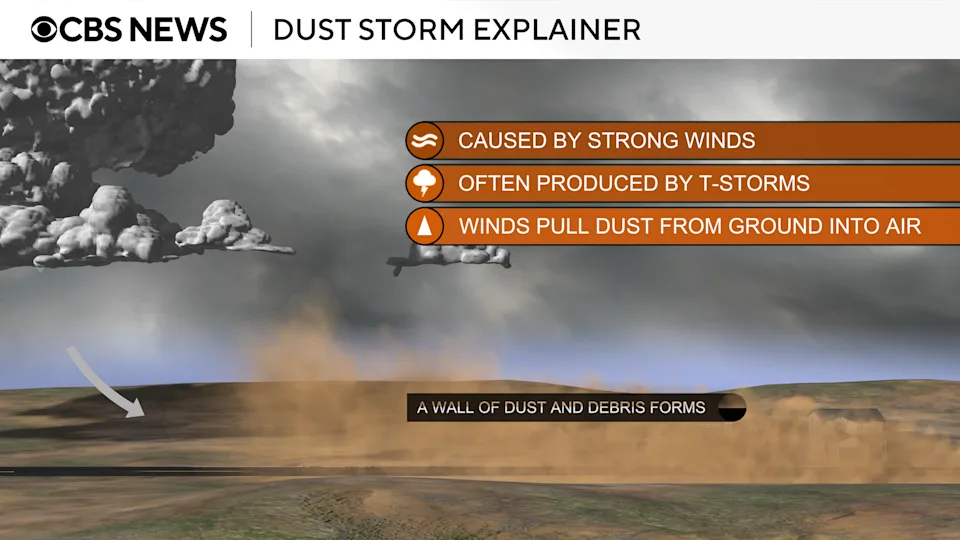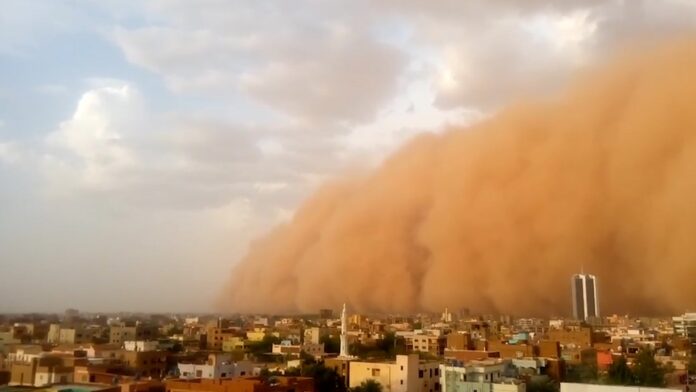The dust storm disrupted travel both on the ground and in the air and knocked out power for thousands in Arizona.
Here’s what to know about dust storms and haboobs.
What is a haboob?
The National Weather Service says a “haboob” is a dust storm that results from outflowing winds from an incoming thunderstorm.
The name haboob comes from the Arabic word habb, which means “to blow,” according to the American Meteorological Society’s Glossary of Meteorology.
“The term ‘haboob’ originated as a description for wind and sandstorms/duststorms in central and northern Sudan, especially around the Khartoum area, where the average number is about 24 per year, with the most frequent occurrences from May through September,” it says.
“The term is now commonly used to describe any wind-driven sandstorm or dust storm in arid or semiarid regions around the world, and haboobs have been observed in the Middle East/Arabian Peninsula, the Sahara Desert, central Australia, and the arid regions of southwest North America, from the Sonoran Desert of northwest Mexico and Arizona to the western portions of the Great Plains of the United States,” the glossary adds.
What causes a haboob?
Haboobs differ from other dust storms as they are specifically triggered by an incoming thunderstorm over a dry and “dusty” region. Dust storms can be caused by incoming cold fronts, drylines, squall lines or warm fronts.
Thunderstorms distribute downdrafts from the base of a building thunderstorm cloud (or “cumulonimbus” clouds).
When the air hits the earth’s surface, it pushes outward in the direction that the storm is moving toward. If that downdraft of air is strong enough, higher wind speeds kick up dust and debris in its path, ahead of the newly formed thunderstorm.
These are more common over regions with dry soils and under severe drought conditions, like the deserts in the southwestern region of the United States. If the ground is more saturated, there is minimal dust or debris to be picked up and will not result in a haboob.

What happens when a haboob hits?
Haboobs often cause a rapid, significant reduction in visibility and a rise in wind speed after the leading edge of a haboob passes, the Glossary of Meteorology says, noting that they can deposit enormous amounts of dust or sand.
Due to the wall of dust overtaking anything within its path, the loss of visibility can be the most dangerous result from haboobs.
The National Weather Service urges caution among drivers, saying dust storms strike with little warning and make driving conditions hazardous.
“If dense dust is observed blowing across or approaching a roadway, pull your vehicle off the pavement as far as possible, stop, turn off lights, set the emergency brake, take your foot off of the brake pedal to be sure the tail lights are not illuminated,” the weather service says.
“In the past, motorists driving in dust storms have pulled off the roadway, leaving lights on. Vehicles approaching from the rear and using the advance car’s lights as a guide have inadvertently left the roadway and in some instances collided with the parked vehicle. Make sure all of your lights are off when you park off the roadway,” it says.
The NWS says those who can’t pull over should “proceed at a speed suitable for visibility, turn on lights and sound horn occasionally.” The Arizona Department of Transportation’s slogan for the best safety practices if caught driving when a haboob or dust storm hits is: “Pull aside, stay alive.”
In Arizona on Monday, heavy rain measured over 2 inches, and wind speeds in the thunderstorm that followed the haboob were up to 66 mph.
Where do haboobs occur?
Haboobs occur “fairly regularly” in arid and semi-arid regions and can also be seen in dry regions, according to the Glossary of Meteorology.
They can occur anywhere in the U.S. and are most common in the Southwest, according to the NWS.


